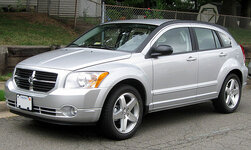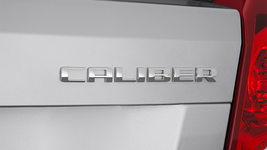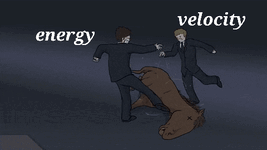If you want a blanket statement, let’s call it 500 yards. But I think that varies completely based on the bullet you are using, how hard the bullet is being pushed and what bullet is being used. I know my answer has so much insight it’s dazzling lol
Navigation
Install the app
How to install the app on iOS
Follow along with the video below to see how to install our site as a web app on your home screen.
Note: This feature may not be available in some browsers.
More options
Style variation
You are using an out of date browser. It may not display this or other websites correctly.
You should upgrade or use an alternative browser.
You should upgrade or use an alternative browser.
Max Effective Range for Elk: 7-08, 6.5C, and 308
- Thread starter BCD
- Start date
Relax, he's a custom rifle builder and a ballistician. LolBecause you’re wrong. People have given you evidence and you’re either intentionally obtuse or just lacking comprehension.
But still, I’ll give it a try — with a vehicle analogy since you seem fond of them.
A 3000 lb car traveling 3 mph has about 1230 J of energy. If you hit an elk at 3 mph, are you confident it kills the elk?
Sent from my SM-S918U using Tapatalk
Actually they kill with momentum, but that's enough words for you to learn in one day.Thanks for supporting my point. Big fast things like 3000 lb cars don’t penetrate. They don’t mushroom and expand. They kill with kinetic energy. Kinda like sledgehammers lol.
Sent from my SM-S918U using Tapatalk
35WhelenAI
WKR
- Joined
- Nov 20, 2021
- Messages
- 2,154
35WhelenAI
WKR
- Joined
- Nov 20, 2021
- Messages
- 2,154
With respect to momentum, I'll take it every day of the week and twice on whatever day of the week it is that I drop my animal from any angle with the right bullet construction for the shot at hand.
sickles107
WKR
Haha, my apologies, bump it to 3.2mph and you’re there.just shy, though fairly confident if you had 125.82 more joules, dead elk
View attachment 680885
View attachment 680886
It's a Dodge Caliber, of course. Top of the line edition no less.
View attachment 680851View attachment 680853
Yeah, but if the deer can dodge the caliber, then pretty sure it won't get killed.
A
Article 4
Guest
That’s exactly what that “momentum” creates. Kinetic ENERGY- not my data or opinion - it is as stated in milspec testingActually they kill with momentum, but that's enough words for you to learn in one day.
Sent from my SM-S918U using Tapatalk
A
Article 4
Guest
That photo supports the energy premise. All that dark black mush comes from energy that accompanies the bullet. If energy didn’t matter, why aren’t we all shooting sabots out of our rifles. Surely a tiny toothpick shaped projectile could kill an elk fast enough that you wouldn’t have to track it for miles and miles hoping it bleed to death in time. Not to mention, no blood trail to track.@Article 4
Was it 3,400 ft-lbs of energy, or 340 ft-lbs of energy that created this wound in this elk?
View attachment 680449
What about this one?
View attachment 680451
What about this one- 3,400ft-lbs or 340ft-lbs?
View attachment 680455
2,600 ft-lbs, or 400ft-lbs?
View attachment 680456
2,600ft-lbs or 400ft-lbs?
View attachment 680457
Nearly 4,000ft-lbs? Or under 400?
View attachment 680458
View attachment 680459
The same- almost 4,000ft-lbs or under 400?
View attachment 680460
View attachment 680461
Momentum is just a product of mass and velocity, the same two variables used to calculate kinetic energy. Like KE, momentum is a useless metric for “stopping power.”Actually they kill with momentum, but that's enough words for you to learn in one day.
Sent from my SM-S918U using Tapatalk
Momentum doesn’t “create” kinetic energy. Mass and velocity create kinetic energy, are the same two variables used to calculate momentum.That’s exactly what that “momentum” creates. Kinetic ENERGY- not my data or opinion - it is as stated in milspec testing
A
Article 4
Guest
You have your thing and I have mine. Im good.Momentum is just a product of mass and velocity, the same two variables used to calculate kinetic energy. Like KE, momentum is a useless metric for “stopping power.”
Momentum doesn’t “create” kinetic energy. Mass and velocity create kinetic energy, are the same two variables used to calculate momentum.
Would you believe Litz and how he says Berger Bullets perform?
After the bullet starts to expand it will shed 40% to 85% of its weight as shrapnel into the surrounding tissue (internal organ). The combination between the shrapnel and the hydrostatic shock produces a massive wound cavity within the vital area (internal organs) that will be 13” to 15” long.
Hydrostatic shock is a concept that a penetrating projectile (such as a bullet) can produce an energetic pressure wave that causes "remote neural damage", this damage in neural tissues creates "rapid incapacitating effects" in living targets. It has also been suggested that pressure wave effects (Shock energy) can cause indirect bone fractures at a distance from the projectile path, although it was later demonstrated that indirect bone fractures are caused by temporary shock cavity effects (strain placed on the bone by the radial tissue displacement produced by the temporary cavity formation) thus damaging radiant internal organs, tissue, and rupturing vessels
Ok, so you wanna say hydrostatic shock isn't what we are talking about, lets see how Quinlan might think about that
For the greatest hydrostatic shock, the velocity of a bullet should be as high as possible while still ensuring the bullet won't break apart. “To maximize hydrostatic shock, you should impact with the most energy possible,” Quinlan said.
So no matter if we use a bonded bullet or a shrapnel style bullet, it sounds like shock and energy kill
Last edited by a moderator:
Archer86
WKR
- Joined
- Oct 22, 2014
- Messages
- 13,495
All that dark black mush comes from energy that accompanies the bullet.
No. That is torn, stretched, bruised tissue resulting from the radial outward stretching from the passage of the bullet it is velocity dependent. Permanent tissue damage from temporary stretch started at around 2,200 fps at impact, regardless of ft-lbs of energy.
If energy didn’t matter, why aren’t we all shooting sabots out of our rifles.
That’s in effect what some are doing by using smaller diameter, high bc bullets.
Surely a tiny toothpick shaped projectile could kill an elk fast enough that you wouldn’t have to track it for miles and miles hoping it bleed to death in time. Not to mention, no blood trail to track.
Which wounds were sub 400 ft-lbs of energy, and which were near 4,000ft-lbs of energy? If ft-lbs if energy matters- then more “energy” creates larger wounds- it will easy for you state which is which.
A
Article 4
Guest
See message aboveNo. That is torn, stretched, bruised tissue resulting from the radial outward stretching from the passage of the bullet it is velocity dependent. Permanent tissue damage from temporary stretch started at around 2,200 fps at impact, regardless of ft-lbs of energy.
That’s in effect what some are doing by using smaller diameter, high bc bullets.
Which wounds were sub 400 ft-lbs of energy, and which were near 4,000ft-lbs of energy? If ft-lbs if energy matters- then more “energy” creates larger wounds- it will easy for you state which is which.
Cheers all and Happy Sunday - Article 4 out
- Joined
- Oct 22, 2014
- Messages
- 13,495
Would you believe Litz and how he says Berger Bullets perform?
After the bullet starts to expand it will shed 40% to 85% of its weight as shrapnel into the surrounding tissue (internal organ). The combination between the shrapnel and the hydrostatic shock produces a massive wound cavity within the vital area (internal organs) that will be 13” to 15” long.
Hydrostatic shock has been disproven ad nauseam. There are 4 or 5 papers in those I gave that go into great details with live tissue.
Jayden Quinlan from Hornady said that? If so- he absolutely is wrong. “Hydrostatic shock” isn’t real.Ok, so you wanna say hydrostatic shock isn't what we are talking about, lets see how Quinlan might think about that
For the greatest hydrostatic shock, the velocity of a bullet should be as high as possible while still ensuring the bullet won't break apart. “To maximize hydrostatic shock, you should impact with the most energy possible,” Quinlan said.
So no matter if we use a bonded bullet or a shrapnel style bullet, it sounds like shock and energy kill
Someone gives you all the information needed to learn, and yet you ignore it and keep posting ignorance.
A
Article 4
Guest
Ad nauseam, strong accusation against two of the foremost ballisticians in the industry. Guess they should both quit, retire to their rocking chairs since now the entire industry can come straight to you now with all things ballistics.Hydrostatic shock has been disproven ad nauseam. There are 4 or 5 papers in those I gave that go into great details with live tissue.
Jayden Quinlan from Hornady said that? If so- he absolutely is wrong. “Hydrostatic shock” isn’t real.
Someone gives you all the information needed to learn, and yet you ignore it and keep posting ignorance.
Last edited by a moderator:
Grundy53
WKR
Once again, proven wrong. So he takes his ball and goes home to think up his next asinine argument.See message above
Cheers all and Happy Sunday - Article 4 out
Sent from my SM-S901U using Tapatalk
A
Article 4
Guest
Please see the two post above...and bring more than just an opinion and insults. Maybe I would take you seriously.Once again, proven wrong. So he takes his ball and goes home to think up his next asinine argument.
Sent from my SM-S901U using Tapatalk
Grundy53
WKR
Please see the two post above...and bring more than just an opinion and insults. Maybe I would take you seriously.
I did. You clearly can't accept that you are wrong. I really don't care if you take me seriously or not.
Sent from my SM-S901U using Tapatalk
Similar threads
Featured Video
Latest Articles
- TT#64 Josh Boyd Elk Hunting Strategies for Every Season
- Aaron Davidson of Gunwerks
- TT#63 Dirk Durham’s Art of Elk Calling
- BIG Buck Stories with the Dirty Giants Podcast
- TT#62 Brian Barney Hunting Bulls without Calling
- Hoyt Alpha AX-2 SD Review
- Kuiu Kenai vs Outdoor Vitals Vario Hooded Jacket Review
- Hoyt RX-9 Ultra Review
- Hunting Vampire Bucks & Building an Optics Kit
- Darton Sequel ST2 35 Review





